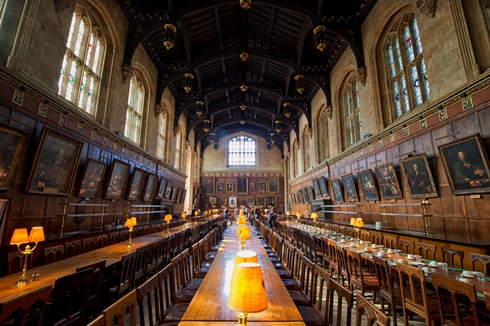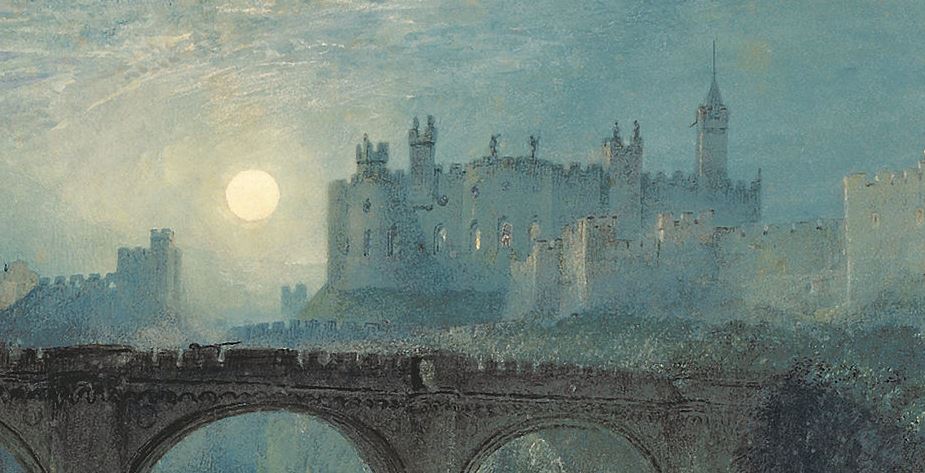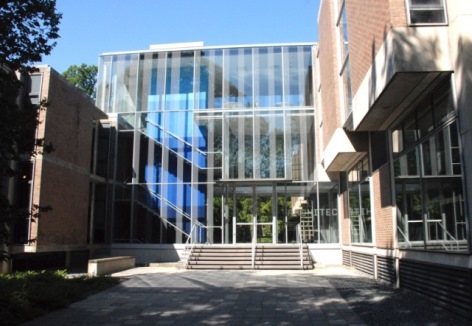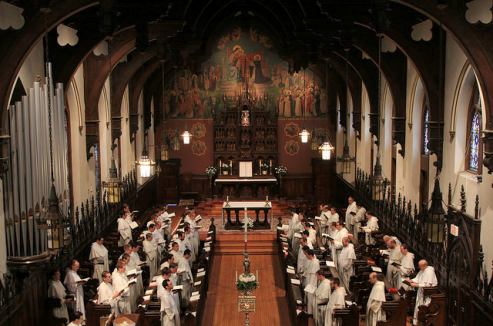I was just beginning a tour of the chapel here at the Dominican House of Studies for a small group of visitors when a young woman about my age said it.
“It looks just like Hogwarts!” she exclaimed, interrupting my introductory remarks about the overall design of the building. The rest of the group quickly murmured in agreement, as everyone began looking up at the hammer-beam roof, perhaps half-expecting Hedwig the Courier Owl to swoop down carrying a letter.
I couldn’t help sighing. Experience told me that launching into a lengthy digression about the distinctive sobriety of Perpendicular Gothic architecture, or the Belgian influences on the design of the House, was unlikely to prove very helpful in redirecting their attention. For some reason, details about clerestory windows, tracery, and mullions just don’t capture the imagination like Gryffindor, Ravenclaw, and Slytherin. Hufflepuff, at least, has the good sense to have as its official house ghost “The Fat Friar.”
Just like Hogwarts. For many who grew up in the era of Harry Potter books and films, “Hogwarts” has become an evocative catchall word to describe buildings of a certain type. Most members of this generation seem to have a vivid mental image of the fictional wizarding academy, and this shared image informs what is meant by the phrase “like Hogwarts”: it means a traditional, usually Gothic, building, often made from stone and wood, with characteristic elements like pointed arches, vaulted ceilings, and soaring spires and towers. Perhaps more poetically, such Hogwarts-like buildings are oft described as mysterious, forbidding, or in some way otherworldly.

The Dining Hall at Christ Church, Oxford. The chapel roof at the House of Studies, as well as the Great Hall at Hogwarts in the Warner Brothers film series, are inspired by this hammer-beam style.
Chapel tours are not the first occasions where I’ve encountered the Hogwarts claim. During my college years, I used to be a campus tour guide, taking groups of tourists and prospective students through the Gothic paradise that is Princeton University. In nearly every tour, someone would remark that he felt like he was walking through Hogwarts. Now, the architecture of Princeton is handsome but varied—it includes Italianate, Romanesque, and Modernist styles—yet it was the Collegiate Gothic buildings that inspired group after group to think of J. K. Rowling’s school of magic.
What makes Gothic architecture so, well, magical? Why does Hogwarts have such a pull on our architectural imaginations? Perhaps, as a start, since it is so resolutely un-modern. Gothic architecture is so firmly grounded in the medieval past that it defies our era’s systematic prejudice for the novel and our obsession with stripped-down functional efficiency at the expense of permanence, ornamentation, and tradition.
Constructions of glass and steel simply do not claim hearts in the same way. At Princeton, tour groups would almost always glide right past the modernist home of the School of Architecture with complete indifference, stopping only for one of my favorite asides of the tour: “And this is the School of Architecture, which is ironically the ugliest building on campus.” Inevitably, this line earned a knowing laugh from the whole group: for all the technical skill and competence of our modern architects, their work sat in the shadows—both literally and figuratively—of the soaring Gothic buildings built a century earlier. Happily, when some of the architecture students got wind of the joke, they took it in stride; they merely responded by making T-shirts for the whole department that read, “Princeton Tour Guides: Ironically the Ugliest People on Campus.”
The appeal of Hogwarts is about more than mere rejection of modernity, or an aesthetic preference for the archaic. Hogwarts captures the imagination—and has become a byword for an entire style of architecture—because we are missing the real thing. When people see a beautiful Gothic building and think, “It looks just like Hogwarts,” it is because the idea sketched by Rowling and portrayed in the films has coopted an entire vision of building—and living—rooted in the High Middle Ages. There is much more depth to this vision than “Hogwarts” can convey.
In a certain way, we become where we live. The buildings in which we live and work and worship shape us over time, and confirm us in patterns of thought and action. The Dominican House of Studies is a physical expression of the pillars of Dominican life that are essential in shaping the characters of Friars Preachers. These pillars each have their proper spaces which point to their proper end—study (the library, classrooms), fraternity (the refectory, the common room), and contemplation (the chapel).
Gothic architecture is the language in which this vision is expressed, giving it definitive form. The Gothic, with its solid materials of wood and stone, affirms that the noblest function (divine worship) demands the noblest form—thus the striking beauty of the chapel, even amidst the relative simplicity of the other rooms in the priory. It is a profoundly human architectural style. Medieval in its origins, it reflects the organic nature of development, with its non-linear design that still adheres to an underlying ordo. Our physicality is affirmed with rich and varied details throughout—the eye always finds an object of meditation upon which to fall, no matter where one looks. There is a sense of being protected within the sanctum, of being at peace within the castle ramparts.
Yet for all this evident humanity, the Gothic architecture of the House of Studies is most strikingly vertical—straining, stretching upwards to heaven, our final end. The vaulted ceilings, the pointed arches, the spires and towers, the tall walls of stained glass—they all direct us away from the purely immanent and towards friendship with God, wherein lies true peace of heart and everlasting happiness. The Gothic at its best draws man out of himself and towards worship of his Creator.
Back in the chapel, I reclaimed the attention of the tour group still scanning the horizon for similarities with Hogwarts. “Well,” I said, “given the fact that the Order of Preachers is nearly 800 years old, and this House is more than 100 years old, I prefer to say that Hogwarts is rather like us. But that’s alright—imitation is the sincerest form of flattery.”
✠
Image: J.M.W. Turner, Alnwick Castle (Used as a site for many scenes of the Harry Potter film series)









